Enjoy life more – naturally! Check out EnjoyLifeOils.com
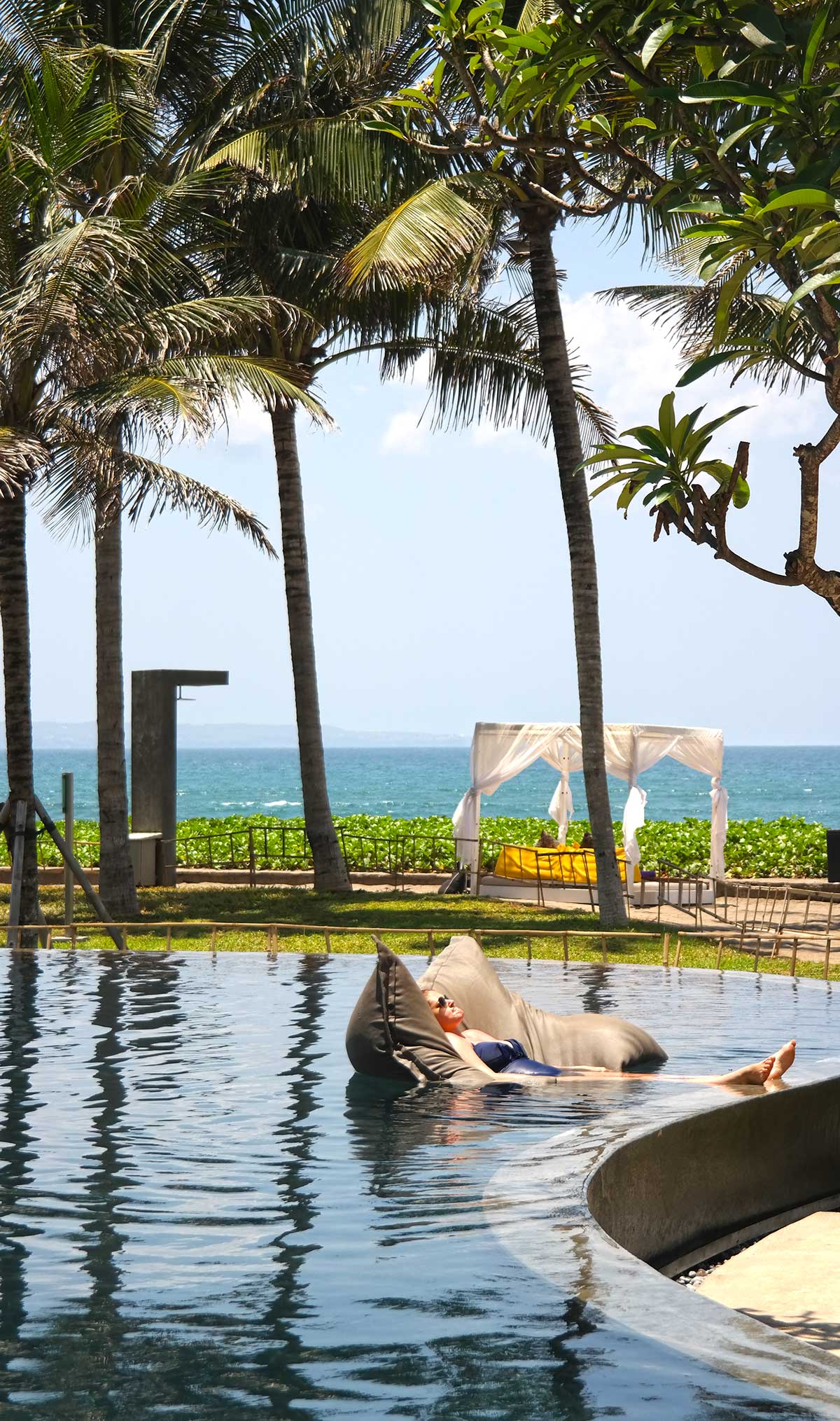
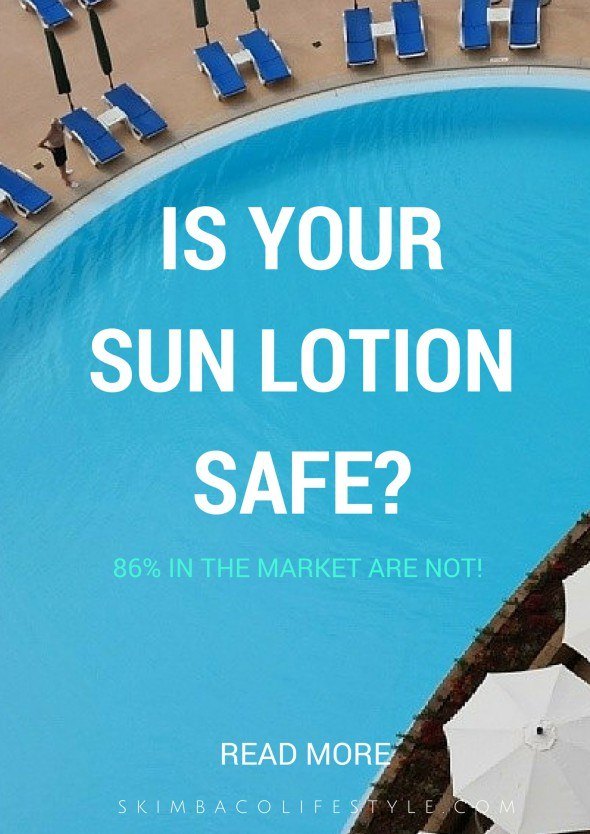 The fact is that FDA last reviewed the safety of oxybenzone in the 1970s. At present, there aren’t any health-based standards for safe levels of oxybenzone in the body. Europe, Canada and Australia changed sunscreen regulations in 1997 though, and oxybenzone was banned and three other specific active sunscreen ingredients – avobenzone (also known as Parsol 1789), titanium dioxide, and zinc oxide – were recommended as the basis of sunscreens.
Doesn’t this make you wonder, why in the USA, the cosmetic companies are still using the chemicals banned in other countries?
EWG’s research shows that some sunscreens on the U.S. market:
– offer inadequate protection from the sun;
– may be less safe and effective than products offered in other countries;
– are labeled with misleading product claims;
– contain ingredients with significant safety concerns.
I had to investigate more and find out is there a way to be outdoors safely, with or without sun screen. On the bottom of this post I also gathered twenty sunscreens and their active ingredients. There are several safe ones to choose from!
There are also natural ways to protect yourself from sun, like adding more Vitamin D in your diet, or increasing your melanin production. Read more. In addition you can use natural products to protect your skin. For example coconut oil helps.
Keep also in mind other Sun Safety issues, like wearing a hat and sunglasses and read Sun Facts from Skin Cancer Foundation.
The fact is that FDA last reviewed the safety of oxybenzone in the 1970s. At present, there aren’t any health-based standards for safe levels of oxybenzone in the body. Europe, Canada and Australia changed sunscreen regulations in 1997 though, and oxybenzone was banned and three other specific active sunscreen ingredients – avobenzone (also known as Parsol 1789), titanium dioxide, and zinc oxide – were recommended as the basis of sunscreens.
Doesn’t this make you wonder, why in the USA, the cosmetic companies are still using the chemicals banned in other countries?
EWG’s research shows that some sunscreens on the U.S. market:
– offer inadequate protection from the sun;
– may be less safe and effective than products offered in other countries;
– are labeled with misleading product claims;
– contain ingredients with significant safety concerns.
I had to investigate more and find out is there a way to be outdoors safely, with or without sun screen. On the bottom of this post I also gathered twenty sunscreens and their active ingredients. There are several safe ones to choose from!
There are also natural ways to protect yourself from sun, like adding more Vitamin D in your diet, or increasing your melanin production. Read more. In addition you can use natural products to protect your skin. For example coconut oil helps.
Keep also in mind other Sun Safety issues, like wearing a hat and sunglasses and read Sun Facts from Skin Cancer Foundation.
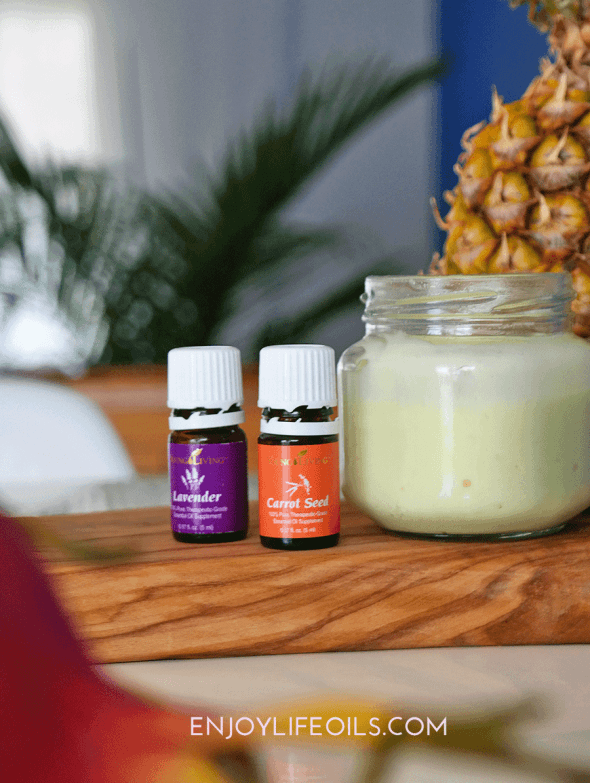 Also consider making your own summer lotion with coconut oil and Carrot Seed and Lavender essential oil (instructions for the natural DIY summer lotion here). Note: this is not a sun block, but great every day summer lotion that has natural ingredients that will benefit your skin.
Also consider making your own summer lotion with coconut oil and Carrot Seed and Lavender essential oil (instructions for the natural DIY summer lotion here). Note: this is not a sun block, but great every day summer lotion that has natural ingredients that will benefit your skin.
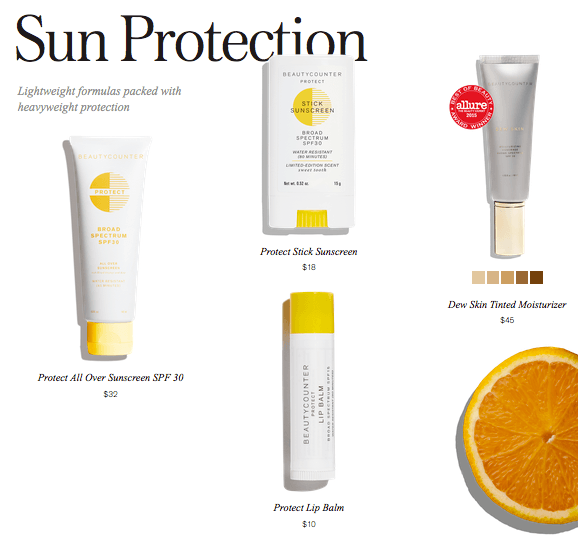 Protect All Over Sunscreen SPF 30 ($32) by Beautycounter was created with the entire family in mind. This lightweight, water-resistant sunscreen is formulated with non-nano zinc oxide, so it blends seamlessly into skin without leaving white streaks, protecting you against both UVA and UVB rays. Aloe helps hydrate skin, while antioxidant-rich green tea and blood orange extracts fight free radicals.
EWG’s Skin Deep Rating: 1
Active Ingredients:
Zinc Oxide 19% (Sunscreen)
Protect All Over uses non-nano zinc oxide, which is an effective, natural, and safe mineral sun blocker.
Protect All Over Sunscreen SPF 30 ($32) by Beautycounter was created with the entire family in mind. This lightweight, water-resistant sunscreen is formulated with non-nano zinc oxide, so it blends seamlessly into skin without leaving white streaks, protecting you against both UVA and UVB rays. Aloe helps hydrate skin, while antioxidant-rich green tea and blood orange extracts fight free radicals.
EWG’s Skin Deep Rating: 1
Active Ingredients:
Zinc Oxide 19% (Sunscreen)
Protect All Over uses non-nano zinc oxide, which is an effective, natural, and safe mineral sun blocker.
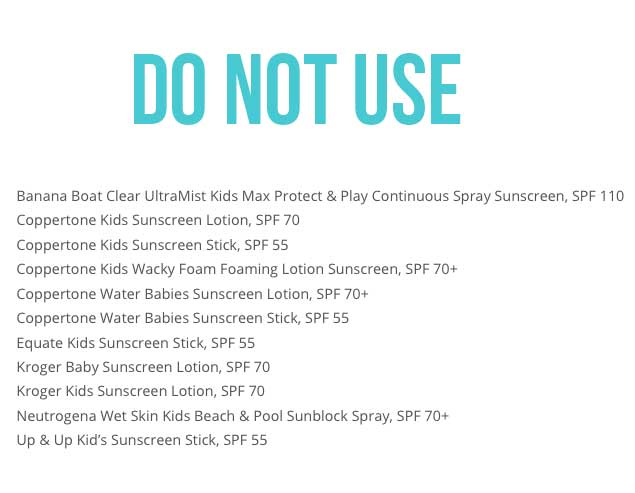 EWG has a “hall of shame” of sun lotions, and in addition here are a few examples of sun lotions that sounds great – but are not safe!
Alarming in these lotions: many of them are marketed for children, many have “Dermatologist recommended” text on the side of the bottle, many say “for sensitive skin” and “organic ingredients”. Don not let these marketing pitches fool you.
EWG has a “hall of shame” of sun lotions, and in addition here are a few examples of sun lotions that sounds great – but are not safe!
Alarming in these lotions: many of them are marketed for children, many have “Dermatologist recommended” text on the side of the bottle, many say “for sensitive skin” and “organic ingredients”. Don not let these marketing pitches fool you.
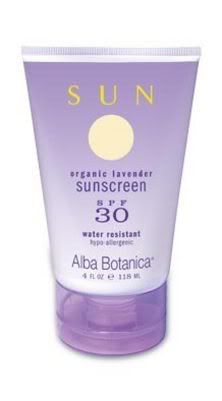 Alba Organic Lavender Sunscreen SPF 30
Octocrylene 10.0%,
Octinoxate 7.5%,
Oxybenzone 6.0%,
Octisalate 5.0%
EWG Rating: 5
Alba Organic Lavender Sunscreen SPF 30
Octocrylene 10.0%,
Octinoxate 7.5%,
Oxybenzone 6.0%,
Octisalate 5.0%
EWG Rating: 5
 Lubriderm Daily Moisturizer Lotion with Sunscreen SPF 15:
Octinoxate 7.5%
Octisalate 4%
Oxybenzone 3%
EWG Rating: 5
Lubriderm Daily Moisturizer Lotion with Sunscreen SPF 15:
Octinoxate 7.5%
Octisalate 4%
Oxybenzone 3%
EWG Rating: 5
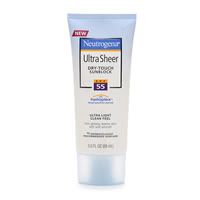 Neutrogena Sunblock, Ultra Sheer Dry-Touch SPF 30:
Avobenzone 3%
Homosalate 10%
Octisalate 5%
Octocrylene 2.8%
Oxybenzone 6%
EWG rating: 5
Neutrogena Sunblock, Ultra Sheer Dry-Touch SPF 30:
Avobenzone 3%
Homosalate 10%
Octisalate 5%
Octocrylene 2.8%
Oxybenzone 6%
EWG rating: 5
 Mary Kay SPF 30 Sunscreen:
Homosalate 10%
Octinoxate 7.5%
Octisalate 5%
Oxybenzone 4%
Avobenzone 2%
EWG rating: 5
Mary Kay SPF 30 Sunscreen:
Homosalate 10%
Octinoxate 7.5%
Octisalate 5%
Oxybenzone 4%
Avobenzone 2%
EWG rating: 5
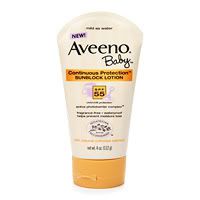 Aveeno Baby Sunblock Lotion, Continuous Protection, SPF 55:
Avobenzone
Homosalate
Octisalate
Octocrylene
Oxybenzone
EWG rating: 7
(This one: Pediatrician recommended… Do not buy!)
Aveeno Baby Sunblock Lotion, Continuous Protection, SPF 55:
Avobenzone
Homosalate
Octisalate
Octocrylene
Oxybenzone
EWG rating: 7
(This one: Pediatrician recommended… Do not buy!)
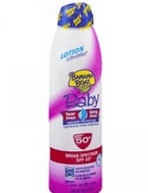 Banana Boat UltraMist Baby Continuous Spray Sunscreen, SPF 50+
Homosalate 15%
Octinoxate 7.5%
Octisalate 5%
Titanium Dioxide 2.4%
EWG rating: 7
Banana Boat UltraMist Baby Continuous Spray Sunscreen, SPF 50+
Homosalate 15%
Octinoxate 7.5%
Octisalate 5%
Titanium Dioxide 2.4%
EWG rating: 7
 Supergoop! Sunlotion SPF50:
Avobenzone (Parsol 1789)
Octinoxate
Octisalate
Octocrylene
Padimate O
PRICE: $19
EWG rating: 5
Supergoop! Sunlotion SPF50:
Avobenzone (Parsol 1789)
Octinoxate
Octisalate
Octocrylene
Padimate O
PRICE: $19
EWG rating: 5
 Protect All Over Sunscreen SPF 30 by Beautycounter was created with the entire family in mind. This lightweight, water-resistant sunscreen is formulated with non-nano zinc oxide, so it blends seamlessly into skin without leaving white streaks, protecting you against both UVA and UVB rays. Aloe helps hydrate skin, while antioxidant-rich green tea and blood orange extracts fight free radicals.
EWG’s Skin Deep Rating: 1
Active Ingredients:
Zinc Oxide 19% (Sunscreen)
PRICE: $32
Protect All Over uses non-nano zinc oxide, which is an effective, natural, and safe mineral sun blocker.
Protect Stick Sunscreen ($18) is also formulated with non-nano zinc oxide. Beautycounter’s Stick Sunscreen provides sheer protection from UVA/UVB rays and glides on smoothly without leaving white residue. Compact and easy to use, the very kid-friendly stick is suitable for face and body and provides water-resistant sun protection for the entire family. Organic ingredients, including coconut oil and acai fruit oil, help to hydrate and protect your skin.
Comes in a limited-edition Sweet Tooth scent, a delicious aroma that comes from rich organic cocoa butter.
EWG’s Skin Deep Rating: 1
Active Ingredient: Zinc Oxide 15.4%.
Shop now at Beautycounter.
Protect All Over Sunscreen SPF 30 by Beautycounter was created with the entire family in mind. This lightweight, water-resistant sunscreen is formulated with non-nano zinc oxide, so it blends seamlessly into skin without leaving white streaks, protecting you against both UVA and UVB rays. Aloe helps hydrate skin, while antioxidant-rich green tea and blood orange extracts fight free radicals.
EWG’s Skin Deep Rating: 1
Active Ingredients:
Zinc Oxide 19% (Sunscreen)
PRICE: $32
Protect All Over uses non-nano zinc oxide, which is an effective, natural, and safe mineral sun blocker.
Protect Stick Sunscreen ($18) is also formulated with non-nano zinc oxide. Beautycounter’s Stick Sunscreen provides sheer protection from UVA/UVB rays and glides on smoothly without leaving white residue. Compact and easy to use, the very kid-friendly stick is suitable for face and body and provides water-resistant sun protection for the entire family. Organic ingredients, including coconut oil and acai fruit oil, help to hydrate and protect your skin.
Comes in a limited-edition Sweet Tooth scent, a delicious aroma that comes from rich organic cocoa butter.
EWG’s Skin Deep Rating: 1
Active Ingredient: Zinc Oxide 15.4%.
Shop now at Beautycounter.
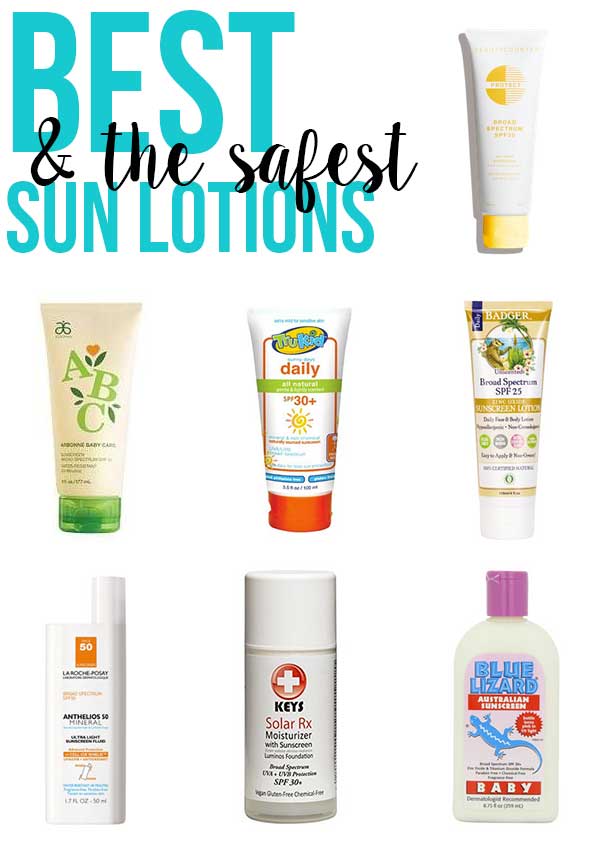 Arbonne Baby Care Sunscreen SPF 30:
Zinc Oxide 14.4%
C12-15 Alkyl Benzoate,
PRICE: $31.99
EWG rating: 1
La Roche-Posay Anthelios 50 Mineral Ultra Light Sunscreen Fluid for Face, Water Resistant with SPF 50 :
Avobenzone
Ecamsule
Octocrylene
PRICE: $25.13
EWG rating: 2
California Baby Water Resistant, Hypo-Allergenic Sunscreen, SPF 30+:
Micronized Titanium Dioxide
PRICE: $20.89
EWG rating: 1
TruKid Sunny Days™ SPF 30+ Natural Mineral Sunscreen:
Titanium dioxide 10%
PRICE: $17.29
EWG rating: 1
Vanicream Sunscreen, Sensitive Skin, SPF 30
Titanium Dioxide 5%
Zinc Oxide 5%
PRICE: $13.05
EWG rating: 1
Blue Lizard Sun lotion SPF 30 for Baby:
Titanium Dioxide 5%
Zinc Oxide 10%
PRICE: $22.50
EWG rating: 1
Keys Solar Rx:
Nano Zinc Oxide
PRICE: $26.95
EWG rating: 1
Badger Balm Spf25 Sunscreen Lotion – Unscented:
Zinc Oxide 20.5%
PRICE: $15.74
EWG rating: 1
Arbonne Baby Care Sunscreen SPF 30:
Zinc Oxide 14.4%
C12-15 Alkyl Benzoate,
PRICE: $31.99
EWG rating: 1
La Roche-Posay Anthelios 50 Mineral Ultra Light Sunscreen Fluid for Face, Water Resistant with SPF 50 :
Avobenzone
Ecamsule
Octocrylene
PRICE: $25.13
EWG rating: 2
California Baby Water Resistant, Hypo-Allergenic Sunscreen, SPF 30+:
Micronized Titanium Dioxide
PRICE: $20.89
EWG rating: 1
TruKid Sunny Days™ SPF 30+ Natural Mineral Sunscreen:
Titanium dioxide 10%
PRICE: $17.29
EWG rating: 1
Vanicream Sunscreen, Sensitive Skin, SPF 30
Titanium Dioxide 5%
Zinc Oxide 5%
PRICE: $13.05
EWG rating: 1
Blue Lizard Sun lotion SPF 30 for Baby:
Titanium Dioxide 5%
Zinc Oxide 10%
PRICE: $22.50
EWG rating: 1
Keys Solar Rx:
Nano Zinc Oxide
PRICE: $26.95
EWG rating: 1
Badger Balm Spf25 Sunscreen Lotion – Unscented:
Zinc Oxide 20.5%
PRICE: $15.74
EWG rating: 1

Enjoy life more in the sun – with safe sunscreen!
It’s that time of the year again! Time to really think about SUNSCREEN. Shocking news is that most sun lotions in the market contain chemicals, which are bad for you and your family, the good news is that I have a list of several products right here for you, and you can check how your sunscreen measures up. Read more about the safety concerns and sun lotions, and then see is your sun lotion on the safe side – if not, consider changing, you can never be too safe, right? I read a very interesting article (CDC Finds 97 Percent of Americans Contaminated by Sunscreens) at Natural News this morning. The article was written by Ellen Holder, co-founder of Caren, an online store for natural, organic and synthetic chemical free skin care products. One sentence in particular crabbed my attention “And interestingly, as sunscreen sales have risen, so has the rate of skin cancers.” What? Shouldn’t sunscreen protect us from skin cancer? Obviously not. According to The Center for Disease Control’s (CDC) recent study nearly all Americans are contaminated with with oxybenzone, a common ingredient in sunscreens. Environmental Working Group (EWG) identifies nearly 600 sunscreens sold in the U.S. that contain oxybenzone, including household brand names like Hawaiian Tropic, Coppertone, and Banana Boat. Oxybenzone has been linked to allergies, hormone disruption, and cell damage. Oxybenzone was also recently linked to low birth weight in baby girls whose mothers are exposed during pregnancy, according to a study from the Mt. Sinai School of Medicine. What? Shouldn’t Food and Drug Administration (FDA) protect us from harmful chemicals like this? Obviously not. The fact is that FDA last reviewed the safety of oxybenzone in the 1970s. At present, there aren’t any health-based standards for safe levels of oxybenzone in the body. Europe, Canada and Australia changed sunscreen regulations in 1997 though, and oxybenzone was banned and three other specific active sunscreen ingredients – avobenzone (also known as Parsol 1789), titanium dioxide, and zinc oxide – were recommended as the basis of sunscreens.
Doesn’t this make you wonder, why in the USA, the cosmetic companies are still using the chemicals banned in other countries?
EWG’s research shows that some sunscreens on the U.S. market:
– offer inadequate protection from the sun;
– may be less safe and effective than products offered in other countries;
– are labeled with misleading product claims;
– contain ingredients with significant safety concerns.
I had to investigate more and find out is there a way to be outdoors safely, with or without sun screen. On the bottom of this post I also gathered twenty sunscreens and their active ingredients. There are several safe ones to choose from!
There are also natural ways to protect yourself from sun, like adding more Vitamin D in your diet, or increasing your melanin production. Read more. In addition you can use natural products to protect your skin. For example coconut oil helps.
Keep also in mind other Sun Safety issues, like wearing a hat and sunglasses and read Sun Facts from Skin Cancer Foundation.
The fact is that FDA last reviewed the safety of oxybenzone in the 1970s. At present, there aren’t any health-based standards for safe levels of oxybenzone in the body. Europe, Canada and Australia changed sunscreen regulations in 1997 though, and oxybenzone was banned and three other specific active sunscreen ingredients – avobenzone (also known as Parsol 1789), titanium dioxide, and zinc oxide – were recommended as the basis of sunscreens.
Doesn’t this make you wonder, why in the USA, the cosmetic companies are still using the chemicals banned in other countries?
EWG’s research shows that some sunscreens on the U.S. market:
– offer inadequate protection from the sun;
– may be less safe and effective than products offered in other countries;
– are labeled with misleading product claims;
– contain ingredients with significant safety concerns.
I had to investigate more and find out is there a way to be outdoors safely, with or without sun screen. On the bottom of this post I also gathered twenty sunscreens and their active ingredients. There are several safe ones to choose from!
There are also natural ways to protect yourself from sun, like adding more Vitamin D in your diet, or increasing your melanin production. Read more. In addition you can use natural products to protect your skin. For example coconut oil helps.
Keep also in mind other Sun Safety issues, like wearing a hat and sunglasses and read Sun Facts from Skin Cancer Foundation.
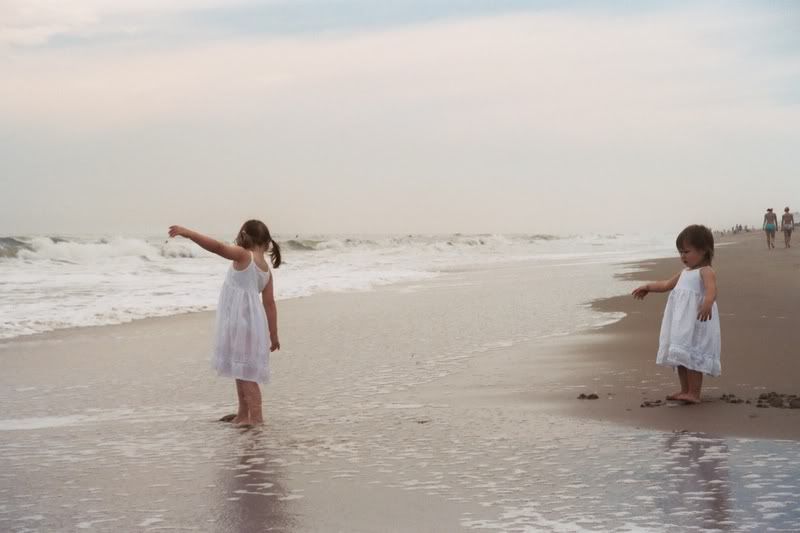
HOW TO FIND THE RIGHT SUNBLOCK FOR YOU AND YOUR FAMILY?
There are over 900 sun lotions in the market in the United States at the moment, and 86% them offer inadequate protection from the sun, or contain chemicals which are harmful for you and your family. Seems like a mission impossible to try to find a sun lotion, which protects and fits in with your family’s needs. Luckily there are safe products, and I have the list of sun lotions right here for you. Some of them are well-known brands you should not use anymore and plenty of great safe choices. Also consider making your own summer lotion with coconut oil and Carrot Seed and Lavender essential oil (instructions for the natural DIY summer lotion here). Note: this is not a sun block, but great every day summer lotion that has natural ingredients that will benefit your skin.
Also consider making your own summer lotion with coconut oil and Carrot Seed and Lavender essential oil (instructions for the natural DIY summer lotion here). Note: this is not a sun block, but great every day summer lotion that has natural ingredients that will benefit your skin.
We recommend: sun lotion from Beautycounter
 Protect All Over Sunscreen SPF 30 ($32) by Beautycounter was created with the entire family in mind. This lightweight, water-resistant sunscreen is formulated with non-nano zinc oxide, so it blends seamlessly into skin without leaving white streaks, protecting you against both UVA and UVB rays. Aloe helps hydrate skin, while antioxidant-rich green tea and blood orange extracts fight free radicals.
EWG’s Skin Deep Rating: 1
Active Ingredients:
Zinc Oxide 19% (Sunscreen)
Protect All Over uses non-nano zinc oxide, which is an effective, natural, and safe mineral sun blocker.
Protect All Over Sunscreen SPF 30 ($32) by Beautycounter was created with the entire family in mind. This lightweight, water-resistant sunscreen is formulated with non-nano zinc oxide, so it blends seamlessly into skin without leaving white streaks, protecting you against both UVA and UVB rays. Aloe helps hydrate skin, while antioxidant-rich green tea and blood orange extracts fight free radicals.
EWG’s Skin Deep Rating: 1
Active Ingredients:
Zinc Oxide 19% (Sunscreen)
Protect All Over uses non-nano zinc oxide, which is an effective, natural, and safe mineral sun blocker.
LIST OF POPULAR SUNSCREENS AND THEIR ACTIVE INGREDIENTS
 EWG has a “hall of shame” of sun lotions, and in addition here are a few examples of sun lotions that sounds great – but are not safe!
Alarming in these lotions: many of them are marketed for children, many have “Dermatologist recommended” text on the side of the bottle, many say “for sensitive skin” and “organic ingredients”. Don not let these marketing pitches fool you.
EWG has a “hall of shame” of sun lotions, and in addition here are a few examples of sun lotions that sounds great – but are not safe!
Alarming in these lotions: many of them are marketed for children, many have “Dermatologist recommended” text on the side of the bottle, many say “for sensitive skin” and “organic ingredients”. Don not let these marketing pitches fool you.
 Alba Organic Lavender Sunscreen SPF 30
Octocrylene 10.0%,
Octinoxate 7.5%,
Oxybenzone 6.0%,
Octisalate 5.0%
EWG Rating: 5
Alba Organic Lavender Sunscreen SPF 30
Octocrylene 10.0%,
Octinoxate 7.5%,
Oxybenzone 6.0%,
Octisalate 5.0%
EWG Rating: 5
 Lubriderm Daily Moisturizer Lotion with Sunscreen SPF 15:
Octinoxate 7.5%
Octisalate 4%
Oxybenzone 3%
EWG Rating: 5
Lubriderm Daily Moisturizer Lotion with Sunscreen SPF 15:
Octinoxate 7.5%
Octisalate 4%
Oxybenzone 3%
EWG Rating: 5
 Neutrogena Sunblock, Ultra Sheer Dry-Touch SPF 30:
Avobenzone 3%
Homosalate 10%
Octisalate 5%
Octocrylene 2.8%
Oxybenzone 6%
EWG rating: 5
Neutrogena Sunblock, Ultra Sheer Dry-Touch SPF 30:
Avobenzone 3%
Homosalate 10%
Octisalate 5%
Octocrylene 2.8%
Oxybenzone 6%
EWG rating: 5
 Mary Kay SPF 30 Sunscreen:
Homosalate 10%
Octinoxate 7.5%
Octisalate 5%
Oxybenzone 4%
Avobenzone 2%
EWG rating: 5
Mary Kay SPF 30 Sunscreen:
Homosalate 10%
Octinoxate 7.5%
Octisalate 5%
Oxybenzone 4%
Avobenzone 2%
EWG rating: 5
 Aveeno Baby Sunblock Lotion, Continuous Protection, SPF 55:
Avobenzone
Homosalate
Octisalate
Octocrylene
Oxybenzone
EWG rating: 7
(This one: Pediatrician recommended… Do not buy!)
Aveeno Baby Sunblock Lotion, Continuous Protection, SPF 55:
Avobenzone
Homosalate
Octisalate
Octocrylene
Oxybenzone
EWG rating: 7
(This one: Pediatrician recommended… Do not buy!)
 Banana Boat UltraMist Baby Continuous Spray Sunscreen, SPF 50+
Homosalate 15%
Octinoxate 7.5%
Octisalate 5%
Titanium Dioxide 2.4%
EWG rating: 7
Banana Boat UltraMist Baby Continuous Spray Sunscreen, SPF 50+
Homosalate 15%
Octinoxate 7.5%
Octisalate 5%
Titanium Dioxide 2.4%
EWG rating: 7
 Supergoop! Sunlotion SPF50:
Avobenzone (Parsol 1789)
Octinoxate
Octisalate
Octocrylene
Padimate O
PRICE: $19
EWG rating: 5
Supergoop! Sunlotion SPF50:
Avobenzone (Parsol 1789)
Octinoxate
Octisalate
Octocrylene
Padimate O
PRICE: $19
EWG rating: 5
CHOOSE FROM THESE SAFER SUN LOTIONS
Recommended: Our favorite sun lotions are from Beautycounter
 Protect All Over Sunscreen SPF 30 by Beautycounter was created with the entire family in mind. This lightweight, water-resistant sunscreen is formulated with non-nano zinc oxide, so it blends seamlessly into skin without leaving white streaks, protecting you against both UVA and UVB rays. Aloe helps hydrate skin, while antioxidant-rich green tea and blood orange extracts fight free radicals.
EWG’s Skin Deep Rating: 1
Active Ingredients:
Zinc Oxide 19% (Sunscreen)
PRICE: $32
Protect All Over uses non-nano zinc oxide, which is an effective, natural, and safe mineral sun blocker.
Protect Stick Sunscreen ($18) is also formulated with non-nano zinc oxide. Beautycounter’s Stick Sunscreen provides sheer protection from UVA/UVB rays and glides on smoothly without leaving white residue. Compact and easy to use, the very kid-friendly stick is suitable for face and body and provides water-resistant sun protection for the entire family. Organic ingredients, including coconut oil and acai fruit oil, help to hydrate and protect your skin.
Comes in a limited-edition Sweet Tooth scent, a delicious aroma that comes from rich organic cocoa butter.
EWG’s Skin Deep Rating: 1
Active Ingredient: Zinc Oxide 15.4%.
Shop now at Beautycounter.
Protect All Over Sunscreen SPF 30 by Beautycounter was created with the entire family in mind. This lightweight, water-resistant sunscreen is formulated with non-nano zinc oxide, so it blends seamlessly into skin without leaving white streaks, protecting you against both UVA and UVB rays. Aloe helps hydrate skin, while antioxidant-rich green tea and blood orange extracts fight free radicals.
EWG’s Skin Deep Rating: 1
Active Ingredients:
Zinc Oxide 19% (Sunscreen)
PRICE: $32
Protect All Over uses non-nano zinc oxide, which is an effective, natural, and safe mineral sun blocker.
Protect Stick Sunscreen ($18) is also formulated with non-nano zinc oxide. Beautycounter’s Stick Sunscreen provides sheer protection from UVA/UVB rays and glides on smoothly without leaving white residue. Compact and easy to use, the very kid-friendly stick is suitable for face and body and provides water-resistant sun protection for the entire family. Organic ingredients, including coconut oil and acai fruit oil, help to hydrate and protect your skin.
Comes in a limited-edition Sweet Tooth scent, a delicious aroma that comes from rich organic cocoa butter.
EWG’s Skin Deep Rating: 1
Active Ingredient: Zinc Oxide 15.4%.
Shop now at Beautycounter.
 Arbonne Baby Care Sunscreen SPF 30:
Zinc Oxide 14.4%
C12-15 Alkyl Benzoate,
PRICE: $31.99
EWG rating: 1
La Roche-Posay Anthelios 50 Mineral Ultra Light Sunscreen Fluid for Face, Water Resistant with SPF 50 :
Avobenzone
Ecamsule
Octocrylene
PRICE: $25.13
EWG rating: 2
California Baby Water Resistant, Hypo-Allergenic Sunscreen, SPF 30+:
Micronized Titanium Dioxide
PRICE: $20.89
EWG rating: 1
TruKid Sunny Days™ SPF 30+ Natural Mineral Sunscreen:
Titanium dioxide 10%
PRICE: $17.29
EWG rating: 1
Vanicream Sunscreen, Sensitive Skin, SPF 30
Titanium Dioxide 5%
Zinc Oxide 5%
PRICE: $13.05
EWG rating: 1
Blue Lizard Sun lotion SPF 30 for Baby:
Titanium Dioxide 5%
Zinc Oxide 10%
PRICE: $22.50
EWG rating: 1
Keys Solar Rx:
Nano Zinc Oxide
PRICE: $26.95
EWG rating: 1
Badger Balm Spf25 Sunscreen Lotion – Unscented:
Zinc Oxide 20.5%
PRICE: $15.74
EWG rating: 1
Arbonne Baby Care Sunscreen SPF 30:
Zinc Oxide 14.4%
C12-15 Alkyl Benzoate,
PRICE: $31.99
EWG rating: 1
La Roche-Posay Anthelios 50 Mineral Ultra Light Sunscreen Fluid for Face, Water Resistant with SPF 50 :
Avobenzone
Ecamsule
Octocrylene
PRICE: $25.13
EWG rating: 2
California Baby Water Resistant, Hypo-Allergenic Sunscreen, SPF 30+:
Micronized Titanium Dioxide
PRICE: $20.89
EWG rating: 1
TruKid Sunny Days™ SPF 30+ Natural Mineral Sunscreen:
Titanium dioxide 10%
PRICE: $17.29
EWG rating: 1
Vanicream Sunscreen, Sensitive Skin, SPF 30
Titanium Dioxide 5%
Zinc Oxide 5%
PRICE: $13.05
EWG rating: 1
Blue Lizard Sun lotion SPF 30 for Baby:
Titanium Dioxide 5%
Zinc Oxide 10%
PRICE: $22.50
EWG rating: 1
Keys Solar Rx:
Nano Zinc Oxide
PRICE: $26.95
EWG rating: 1
Badger Balm Spf25 Sunscreen Lotion – Unscented:
Zinc Oxide 20.5%
PRICE: $15.74
EWG rating: 1
